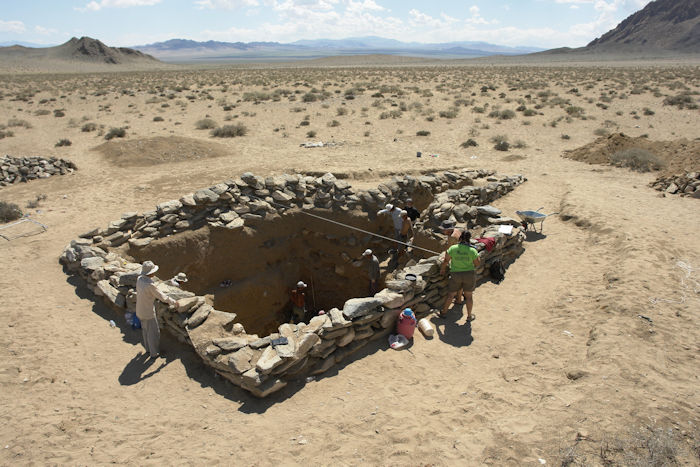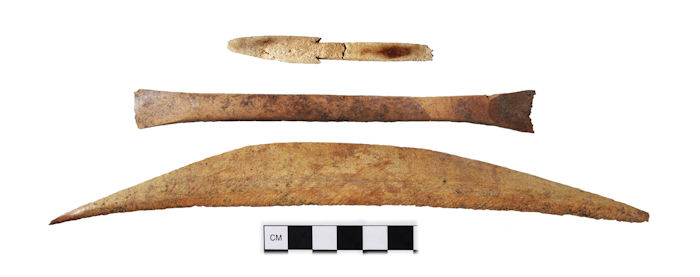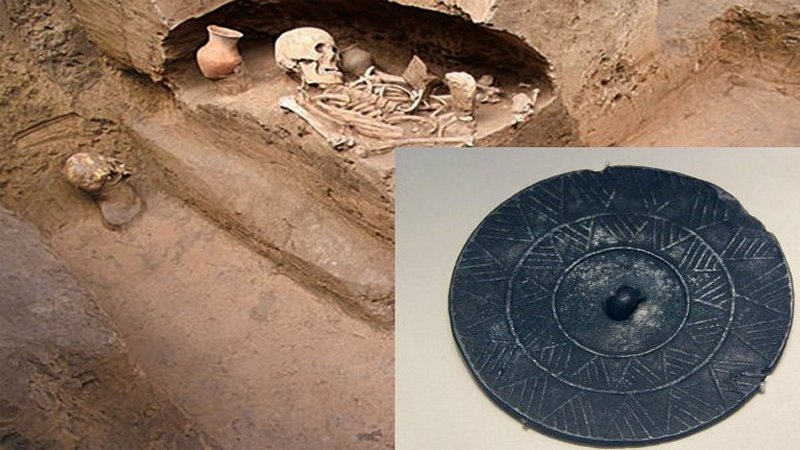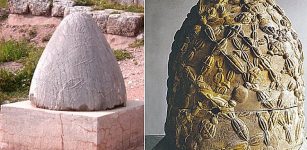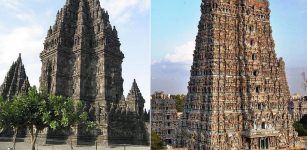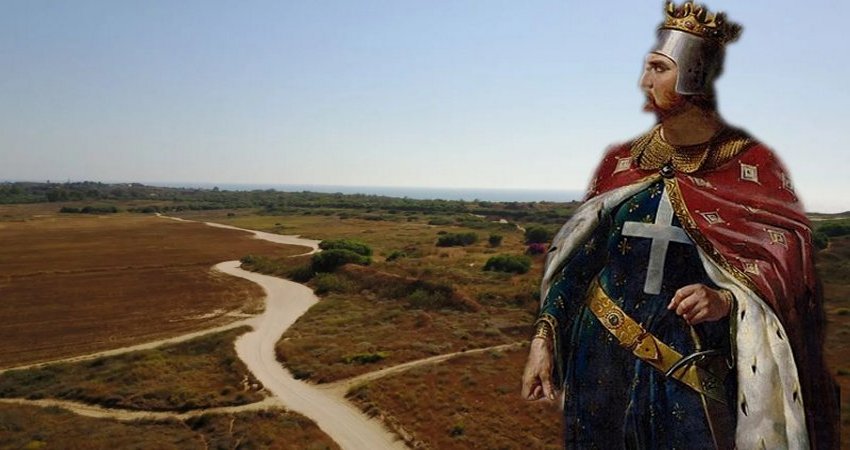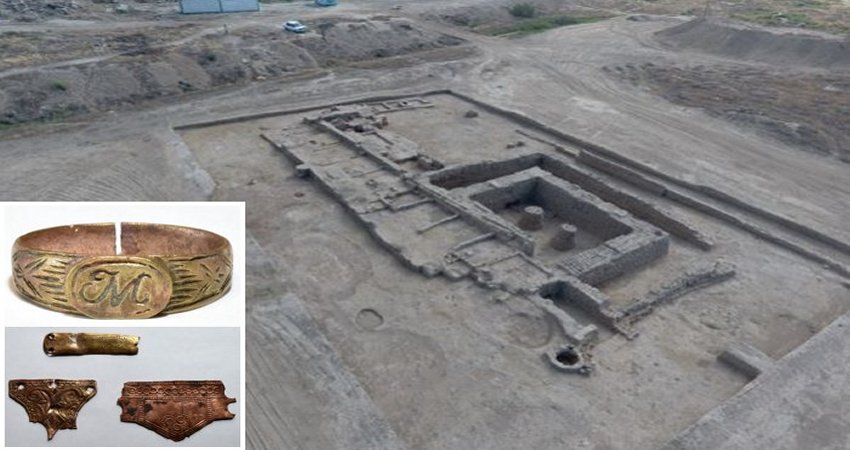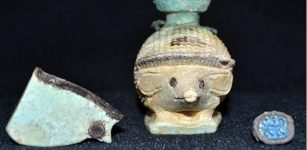Ancient DNA Reveals Mongolia’s First Nomadic Empire Was Multiethnic
Conny Waters – MessageToEagle.com – Long obscured in the shadows of history, the world’s first nomadic empire—the Xiongnu—is, at last, coming into view thanks to painstaking archaeological excavations and new ancient DNA evidence.
Arising on the Mongolian steppe 1,500 years before the Mongols, the Xiongnu empire became one of Iron Age Asia’s most powerful political forces—ultimately stretching its reach and influence from Egypt to Rome to Imperial China.
The Xiongnu built a multiethnic empire on the Mongolian steppe that was connected by trade to Rome, Egypt, and Imperial China. Artist reconstruction of life among the Xiongnu imperial elite by Galmandakh Amarsanaa. Credit: © Dairycultures Project
Economically grounded in animal husbandry and dairying, the Xiongnu were famously nomadic, building their empire on the backs of horses. Their proficiency at mounted warfare made them swift and formidable foes, and their legendary conflicts with Imperial China ultimately led to the construction of the Great Wall.
However, unlike their neighbors, the Xiongnu never developed a writing system, and consequently historical records about the Xiongnu have been almost entirely written and passed down by their rivals and enemies. Such accounts, largely recorded by Han Dynasty chroniclers, provide little useful information on the origins of the Xiongnu, their political rise, or their social organization.
Although recent archaeogenetics studies have now traced the origins of the Xiongnu as a political entity to a sudden migration and mixing of disparate nomadic groups in northern Mongolia ca. 200 BCE, such findings have raised more questions than answers.
To better understand the inner workings of the seemingly enigmatic Xiongnu empire, an international team of researchers conducted an in-depth genetic investigation of two imperial elite Xiongnu cemeteries along the western frontier of the empire: an aristocratic elite cemetery at Takhiltyn Khotgor and a local elite cemetery at Shombuuzyn Belchir.
Excavation of the Xiongnu Elite Tomb 64 containing a high status aristocratic woman at the site of Takhiltiin Khotgor, Mongolian Altai. Credit: © J. Bayarsaikhan
“We knew that the Xiongnu had a high degree of genetic diversity, but due to a lack of community-scale genomic data it remained unclear whether this diversity emerged from a heterogeneous patchwork of locally homogenous communities or whether local communities were themselves genetically diverse,” explains Juhyeon Lee, first author of the study and Ph.D. student at Seoul National University.
“We wanted to know how such genetic diversity was structured at different social and political scales, as well as in relation to power, wealth, and gender.”
The rise of a multiethnic empire
Researchers found that individuals within the two cemeteries exhibited extremely high genetic diversity, to a degree comparable with that found across the Xiongnu Empire as a whole. In fact, high genetic diversity and heterogeneity was present at all levels—across the empire, within individual communities, and even within individual families—confirming the characterization of the Xiongnu Empire as a multiethnic empire. However, much of this diversity was stratified by status.
The lowest status individuals (interred as satellite burials of the elites, likely reflecting a servant status) exhibited the highest genetic diversity and heterogeneity, suggesting that these individuals originated from far-flung parts of the Xiongnu Empire or beyond.
In contrast, local and aristocratic elites buried in wood-plank coffins within square tombs and stone ring graves exhibited lower overall genetic diversity and harbored higher proportions of eastern Eurasian ancestries, suggesting that elite status and power was concentrated among specific genetic subsets of the broader Xiongnu population. Nevertheless, even elite families appear to have used marriage to cement ties to newly incorporated groups, especially at Shombuuzyn Belchir.
“We now have a better idea of how the Xiongnu expanded their empire by incorporating disparate groups and leveraging marriage and kinship into empire building,” says senior author Dr. Choongwon Jeong, Associate Professor of Biological Sciences at Seoul National University.
Powerful women in Xiongnu society
A second major finding was that high status Xiongnu burials and elite grave goods were disproportionately associated with women, corroborating textual and archaeological evidence that Xiongnu women played especially prominent political roles in the expansion and integration of new territories along the empire’s frontier.
At the aristocratic elite cemetery of Takhiltyn Khotgor, researchers found that the elite monumental tombs had been built for women, with each prominent woman flanked by a host of commoner males buried in simple graves. The women were interred in elaborate coffins with the golden sun and moon emblems of Xiongnu imperial power and one tomb even contained a team of six horses and a partial chariot.
Archaeological excavation at the Shombuuziin Belchir Xiongnu cemetery, Mongolian Altai. Credit: © J. Bayarsaikhan
At the nearby local elite cemetery of Shombuuzyn Belchir, women likewise occupied the wealthiest and most elaborate graves, with grave goods consisting of wooden coffins, golden emblems and gilded objects, glass and faience beads, Chinese mirrors, a bronze cauldron, silk clothing, wooden carts, and more than a dozen livestock, as well as three objects conventionally associated with male horse-mounted warriors: a Chinese lacquer cup, a gilded iron belt clasp, and horse tack. Such objects and their symbolism convey the great political power of the women.
“Women held great power as agents of the Xiongnu imperial state along the frontier, often holding exclusive noble ranks, maintaining Xiongnu traditions, and engaging in both steppe power politics and the so-called Silk Road networks of exchange,” says Dr. Bryan Miller, project archaeologist and Assistant Professor of Central Asian Art & Archaeology at the University of Michigan.
Children in Xiongnu society
Genetic analysis also provided rare insights into the social roles of children in Xiongnu society. “Children received differential mortuary treatment depending upon age and sex, giving clues to the ages at which gender and status were ascribed in Xiongnu society,” says senior author Dr. Christina Warinner, Associate Professor of Anthropology at Harvard University and Group Leader at the Max Planck Institute for Evolutionary Anthropology.
An Egyptian-style faience bead worn as part of a necklace by a young woman buried with an infant in Grave 19 of the Shombuuziin Belchir cemetery. Such beads, depicting the phallus of the Egyptian god Bes, are associated with the protection of children. Credit: © Bryan K. Miller
Golden icons of the sun and moon, symbols of the Xiongnu, decorating the coffin found in Elite Tomb 64 at the Takhiltiin Khotgor site, Mongolian Altai. Credit: © J. Bayarsaikhan
hild’s bow and arrow set from Grave 26 at the Shombuuziin Belchir cemetery. Credit: © Bryan K. Miller
Researchers found, for example, that although adolescent Xiongnu boys as young as 11–12 years old were buried with a bow and arrows, in a manner resembling that of adult males, younger boys were not. This suggests that the gendered social roles of hunter and warrior were not ascribed to boys until late childhood or early adolescence.
The legacy of the Xiongnu today
Although the Xiongnu empire ultimately disintegrated in the late 1st century CE, the findings of the study point to the enduring social and cultural legacy of the Xiongnu.
“Our results confirm the long-standing nomadic tradition of elite princesses playing critical roles in the political and economic life of the empires, especially in periphery regions—a tradition that began with the Xiongnu and continued more than a thousand years later under the Mongol Empire,” says Dr. Jamsranjav Bayarsaikhan, project archaeologist and Mongolian Archaeology Project: Surveying the Steppes (MAPSS) project coordinator at the Max Planck Institute for Geoanthropology. “While history has at times dismissed nomadic empires as fragile and short, their strong traditions have never been broken.”
The study was published in Science Advances
Written by Conny Waters – MessageToEagle.com – AncientPages.com Staff Writer



